Citibank 2013 Annual Report Download - page 43
Download and view the complete annual report
Please find page 43 of the 2013 Citibank annual report below. You can navigate through the pages in the report by either clicking on the pages listed below, or by using the keyword search tool below to find specific information within the annual report.-
 1
1 -
 2
2 -
 3
3 -
 4
4 -
 5
5 -
 6
6 -
 7
7 -
 8
8 -
 9
9 -
 10
10 -
 11
11 -
 12
12 -
 13
13 -
 14
14 -
 15
15 -
 16
16 -
 17
17 -
 18
18 -
 19
19 -
 20
20 -
 21
21 -
 22
22 -
 23
23 -
 24
24 -
 25
25 -
 26
26 -
 27
27 -
 28
28 -
 29
29 -
 30
30 -
 31
31 -
 32
32 -
 33
33 -
 34
34 -
 35
35 -
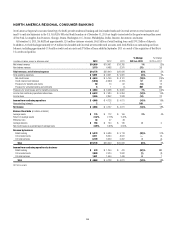 36
36 -
 37
37 -
 38
38 -
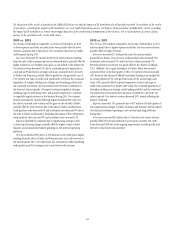 39
39 -
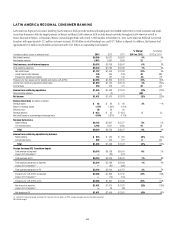 40
40 -
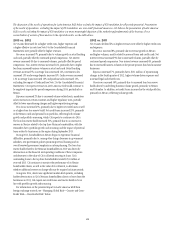 41
41 -
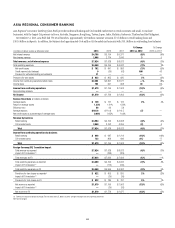 42
42 -
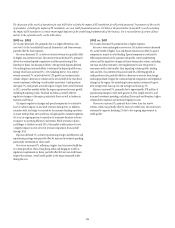 43
43 -
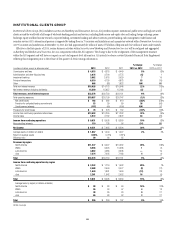 44
44 -
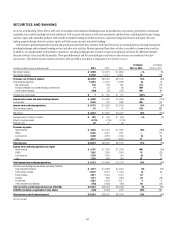 45
45 -
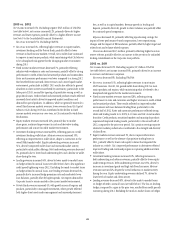 46
46 -
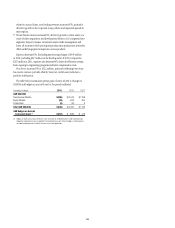 47
47 -
 48
48 -
 49
49 -
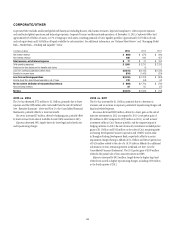 50
50 -
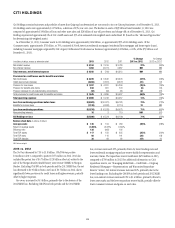 51
51 -
 52
52 -
 53
53 -
 54
54 -
 55
55 -
 56
56 -
 57
57 -
 58
58 -
 59
59 -
 60
60 -
 61
61 -
 62
62 -
 63
63 -
 64
64 -
 65
65 -
 66
66 -
 67
67 -
 68
68 -
 69
69 -
 70
70 -
 71
71 -
 72
72 -
 73
73 -
 74
74 -
 75
75 -
 76
76 -
 77
77 -
 78
78 -
 79
79 -
 80
80 -
 81
81 -
 82
82 -
 83
83 -
 84
84 -
 85
85 -
 86
86 -
 87
87 -
 88
88 -
 89
89 -
 90
90 -
 91
91 -
 92
92 -
 93
93 -
 94
94 -
 95
95 -
 96
96 -
 97
97 -
 98
98 -
 99
99 -
 100
100 -
 101
101 -
 102
102 -
 103
103 -
 104
104 -
 105
105 -
 106
106 -
 107
107 -
 108
108 -
 109
109 -
 110
110 -
 111
111 -
 112
112 -
 113
113 -
 114
114 -
 115
115 -
 116
116 -
 117
117 -
 118
118 -
 119
119 -
 120
120 -
 121
121 -
 122
122 -
 123
123 -
 124
124 -
 125
125 -
 126
126 -
 127
127 -
 128
128 -
 129
129 -
 130
130 -
 131
131 -
 132
132 -
 133
133 -
 134
134 -
 135
135 -
 136
136 -
 137
137 -
 138
138 -
 139
139 -
 140
140 -
 141
141 -
 142
142 -
 143
143 -
 144
144 -
 145
145 -
 146
146 -
 147
147 -
 148
148 -
 149
149 -
 150
150 -
 151
151 -
 152
152 -
 153
153 -
 154
154 -
 155
155 -
 156
156 -
 157
157 -
 158
158 -
 159
159 -
 160
160 -
 161
161 -
 162
162 -
 163
163 -
 164
164 -
 165
165 -
 166
166 -
 167
167 -
 168
168 -
 169
169 -
 170
170 -
 171
171 -
 172
172 -
 173
173 -
 174
174 -
 175
175 -
 176
176 -
 177
177 -
 178
178 -
 179
179 -
 180
180 -
 181
181 -
 182
182 -
 183
183 -
 184
184 -
 185
185 -
 186
186 -
 187
187 -
 188
188 -
 189
189 -
 190
190 -
 191
191 -
 192
192 -
 193
193 -
 194
194 -
 195
195 -
 196
196 -
 197
197 -
 198
198 -
 199
199 -
 200
200 -
 201
201 -
 202
202 -
 203
203 -
 204
204 -
 205
205 -
 206
206 -
 207
207 -
 208
208 -
 209
209 -
 210
210 -
 211
211 -
 212
212 -
 213
213 -
 214
214 -
 215
215 -
 216
216 -
 217
217 -
 218
218 -
 219
219 -
 220
220 -
 221
221 -
 222
222 -
 223
223 -
 224
224 -
 225
225 -
 226
226 -
 227
227 -
 228
228 -
 229
229 -
 230
230 -
 231
231 -
 232
232 -
 233
233 -
 234
234 -
 235
235 -
 236
236 -
 237
237 -
 238
238 -
 239
239 -
 240
240 -
 241
241 -
 242
242 -
 243
243 -
 244
244 -
 245
245 -
 246
246 -
 247
247 -
 248
248 -
 249
249 -
 250
250 -
 251
251 -
 252
252 -
 253
253 -
 254
254 -
 255
255 -
 256
256 -
 257
257 -
 258
258 -
 259
259 -
 260
260 -
 261
261 -
 262
262 -
 263
263 -
 264
264 -
 265
265 -
 266
266 -
 267
267 -
 268
268 -
 269
269 -
 270
270 -
 271
271 -
 272
272 -
 273
273 -
 274
274 -
 275
275 -
 276
276 -
 277
277 -
 278
278 -
 279
279 -
 280
280 -
 281
281 -
 282
282 -
 283
283 -
 284
284 -
 285
285 -
 286
286 -
 287
287 -
 288
288 -
 289
289 -
 290
290 -
 291
291 -
 292
292 -
 293
293 -
 294
294 -
 295
295 -
 296
296 -
 297
297 -
 298
298 -
 299
299 -
 300
300 -
 301
301 -
 302
302 -
 303
303 -
 304
304 -
 305
305 -
 306
306 -
 307
307 -
 308
308 -
 309
309 -
 310
310 -
 311
311 -
 312
312 -
 313
313 -
 314
314 -
 315
315 -
 316
316 -
 317
317 -
 318
318 -
 319
319 -
 320
320 -
 321
321 -
 322
322 -
 323
323 -
 324
324 -
 325
325 -
 326
326 -
 327
327 -
 328
328 -
 329
329 -
 330
330 -
 331
331 -
 332
332 -
 333
333 -
 334
334 -
 335
335 -
 336
336 -
 337
337 -
 338
338 -
 339
339 -
 340
340 -
 341
341 -
 342
342
 |
 |
25
The discussion of the results of operations for Asia RCB below excludes the impact of FX translation for all periods presented. Presentation of the results
of operations, excluding the impact of FX translation, are non-GAAP financial measures. Citi believes the presentation of Asia RCB’s results excluding
the impact of FX translation is a more meaningful depiction of the underlying fundamentals of the business. For a reconciliation of certain of these
metrics to the reported results, see the table above.
2013 vs. 2012
Net income decreased 12%, primarily due to a higher effective tax rate
(see Note 9 to the Consolidated Financial Statements) and lower revenues,
partially offset by lower expenses.
Revenues decreased 1%, as lower net interest revenue was partially offset
by higher non-interest revenue. Net interest revenue declined 5%, primarily
driven by continued spread compression and the repositioning of the
franchise in Korea (see discussion below). Average retail deposits declined
4% resulting from continued efforts to rebalance the deposit portfolio mix.
Average retail loans increased 3% (11% excluding Korea). Non-interest
revenue increased 7%, mainly driven by 22% growth in investment sales
volume, despite a decrease in volumes in the second half of the year due to
investor sentiment, reflecting overall market uncertainty. Cards purchase
sales grew 7%, with growth across the region. Despite lower overall revenues
in 2013, several key markets within the region experienced revenue growth,
including Hong Kong, India, Thailand and China, partially offset by
regulatory changes in the region, particularly Korea as well as Indonesia,
Australia and Taiwan.
Citi expects regulatory changes and spread compression to continue to
have an adverse impact on Asia RCB revenues during 2014. In addition,
consistent with its strategy to concentrate its consumer banking operations
in major metropolitan areas and focus on high quality consumer segments,
Citi is in an ongoing process to reposition its consumer franchise in Korea
to improve its operating efficiency and returns. While revenues in Korea
could begin to stabilize in early 2014, this market could continue to have
a negative impact on year-over-year revenue comparisons for Asia RCB
through 2014.
Expenses declined 3%, as lower repositioning charges and efficiency and
repositioning savings were partially offset by increased investment spending,
particularly investments in China cards.
Provisions increased 5%, reflecting a higher loan loss reserve build due
to volume growth in China, Hong Kong, India and Singapore as well as
regulatory requirements in Korea, partially offset by lower net credit losses.
Despite this increase, overall credit quality in the region remained stable
during the year.
2012 vs. 2011
Net income decreased 5% primarily due to higher expenses.
Revenues were unchanged year-over-year. Net interest revenue decreased
3%, as the benefit of higher loan and deposit balances was offset by spread
compression, mainly in retail lending. Spread compression continued to
reflect improvements in the customer risk profile, stricter underwriting
criteria and the regulatory changes in Korea where policy actions, including
rate caps and other initiatives, were implemented to slow the growth of
consumer credit in that market, thus impacting volume growth, lending
rates and fees. Non-interest revenue increased 6%, reflecting growth in
cards purchase sales, partially offset by a decrease in revenue from foreign
exchange products. Despite the continued spread compression and regulatory
changes in the region, the underlying business metrics continued to grow,
with average retail loans up 6% and average card loans up 2%.
Expenses increased 5%, primarily due to approximately $78 million of
repositioning charges in the fourth quarter of 2012, largely in Korea, and
increased investment spending, including China cards and branches, higher
volume-driven expenses and increased regulatory costs.
Provisions increased 1%, primarily due to lower loan loss reserve
releases, which was partially offset by lower net credit losses. Net credit losses
continued to improve, declining 2% due to the ongoing improvement in
credit quality.
